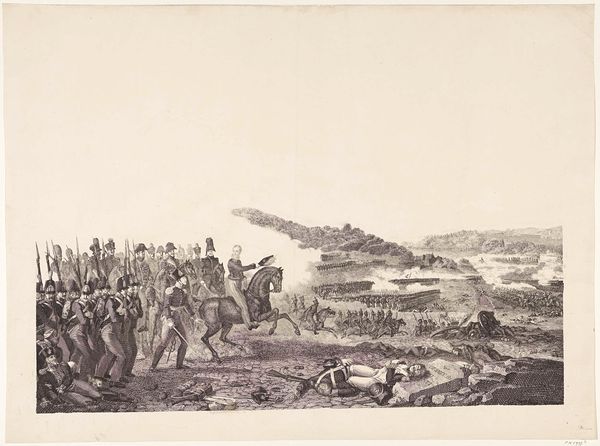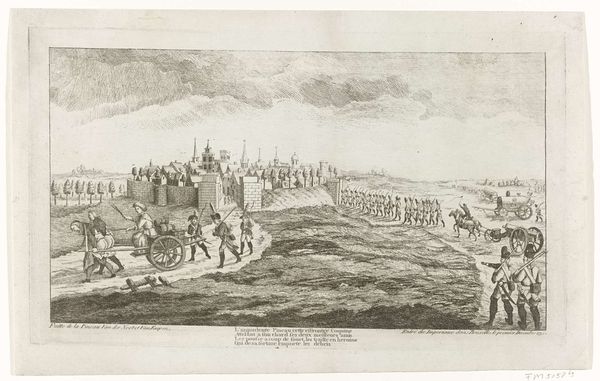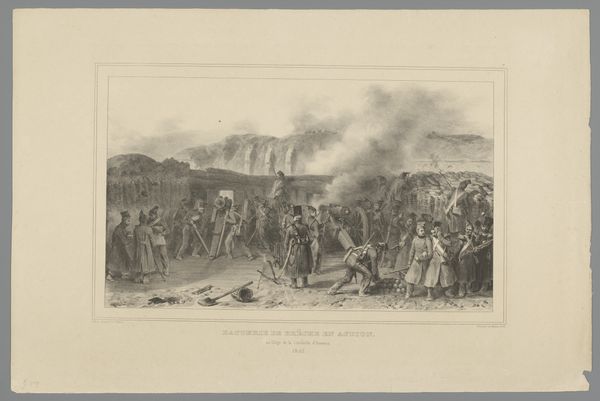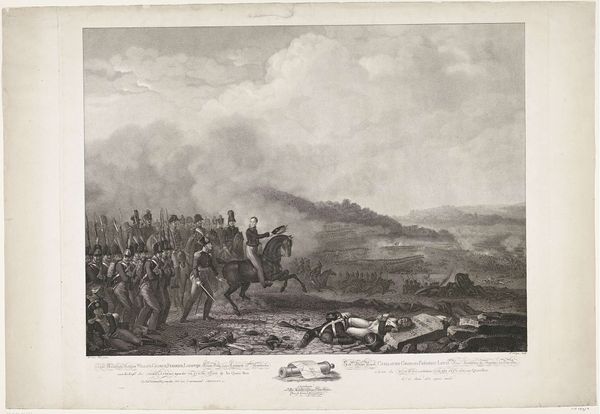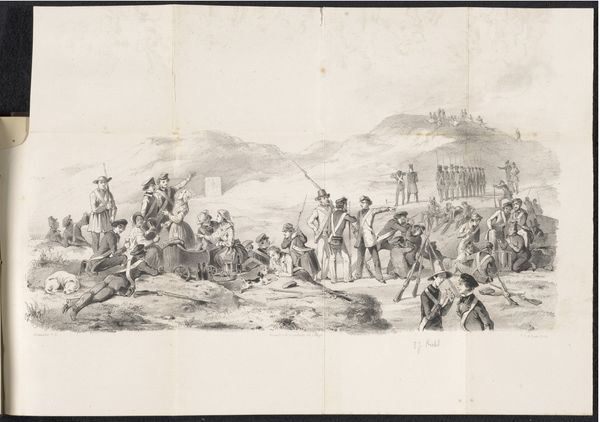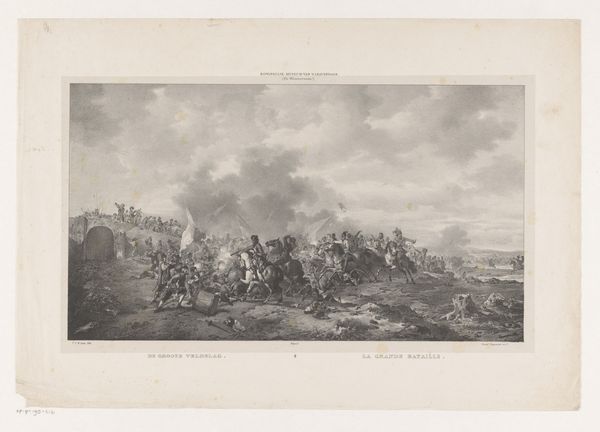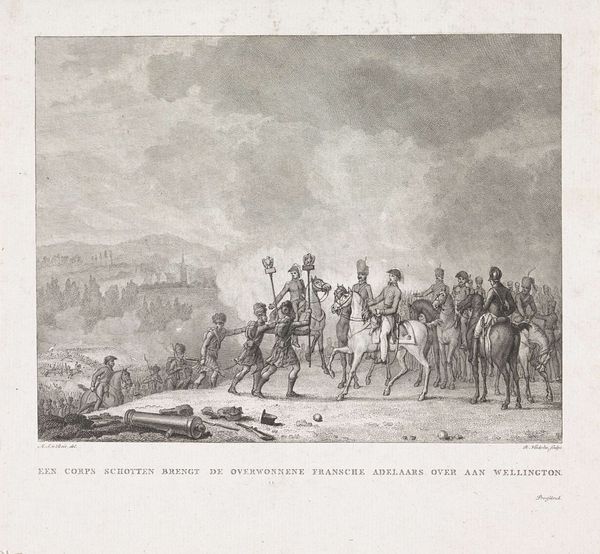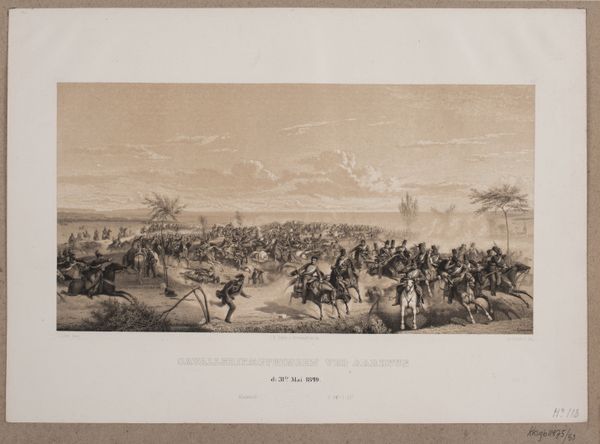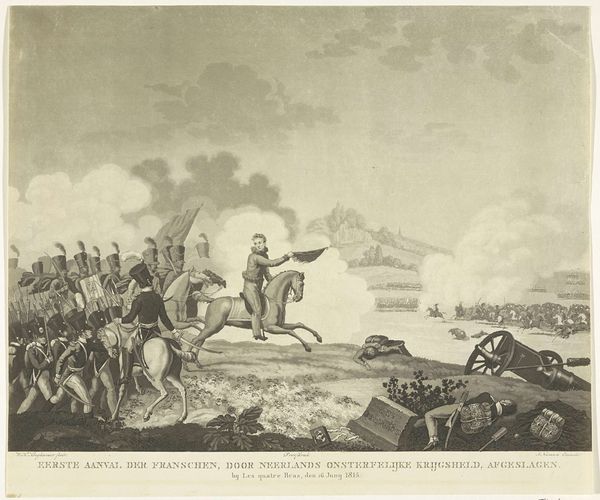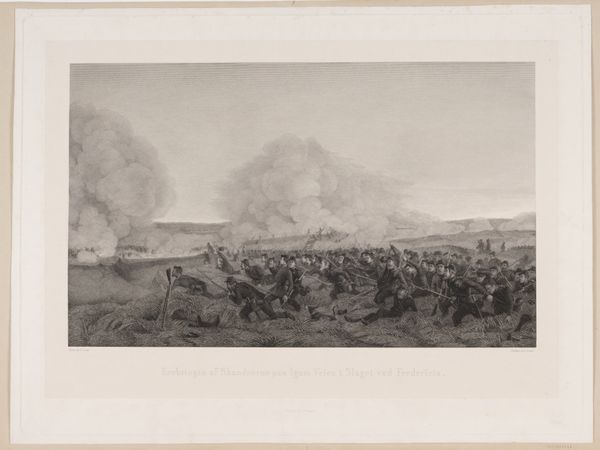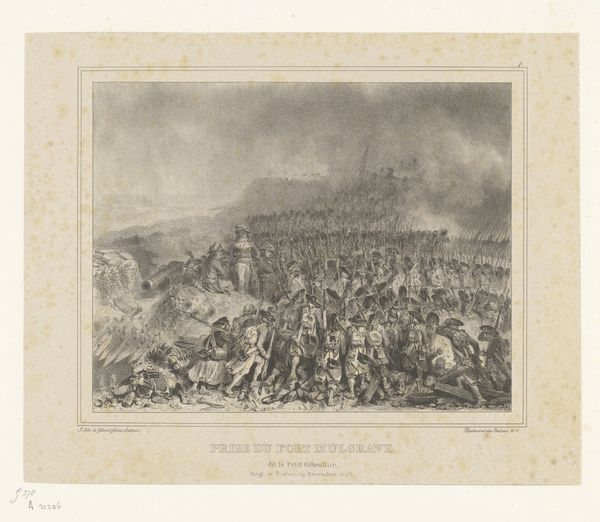
print, engraving
#
narrative-art
# print
#
war
#
old engraving style
#
romanticism
#
history-painting
#
engraving
Dimensions: height 488 mm, width 653 mm
Copyright: Rijks Museum: Open Domain
Editor: This is Albertus Anthonius Nunnink's "Aanval Djaga-Raga (Bali) in 1849," an engraving print depicting a chaotic war scene. I am struck by the detailed rendering of so many figures amidst the smoke and what I assume are fallen combatants. What can you tell me about the historical context of this artwork? Curator: It’s fascinating how this print romanticizes a brutal colonial encounter. Consider the title itself – "Attack on Djaga-Raga". It frames the Dutch military action as a straightforward assault, obscuring the complex power dynamics and the Balinese resistance to Dutch colonial expansion in the 19th century. What do you make of the figures? Editor: There's a clear distinction, though not always a division, between two groups. I think, based on my rudimentary understanding of the era, they're the colonizers and the colonized, in some sort of conflict or battle? Curator: Precisely. This imagery played a crucial role in shaping public perception of the colonial project back in the Netherlands. How might a work like this be used to justify colonial violence? Editor: I guess it could reinforce the idea of European superiority and portray colonization as a civilizing mission, a fight for progress or something noble. The very clean, though obviously pained, white soldiers against the dark, seemingly barbaric natives seems…problematic now. Curator: Exactly! Think about how the details – even the act of creating this as a reproducible print – allowed the image and its underlying political message to circulate widely, solidifying certain beliefs about empire and otherness. And remember, the Rijksmuseum holds it. Editor: So, its current placement within the Rijksmuseum also says something about how the country sees that history. Thinking about its message and impact, this print makes me consider the power dynamics involved in historical representation, and it gives a perspective on colonial history. Curator: And the way these historical depictions continue to influence contemporary understandings of colonialism, well, that gives us something else to think about too.
Comments
No comments
Be the first to comment and join the conversation on the ultimate creative platform.
